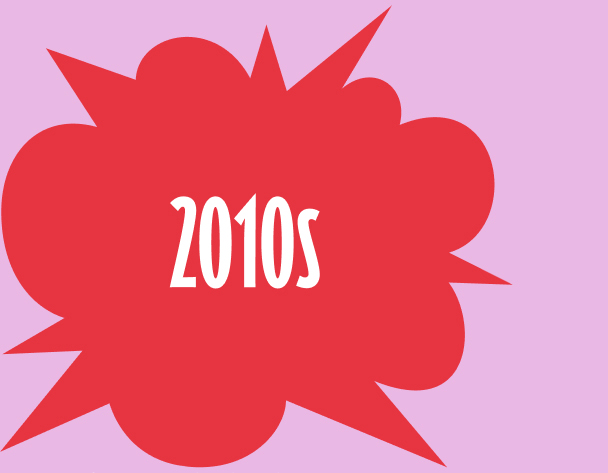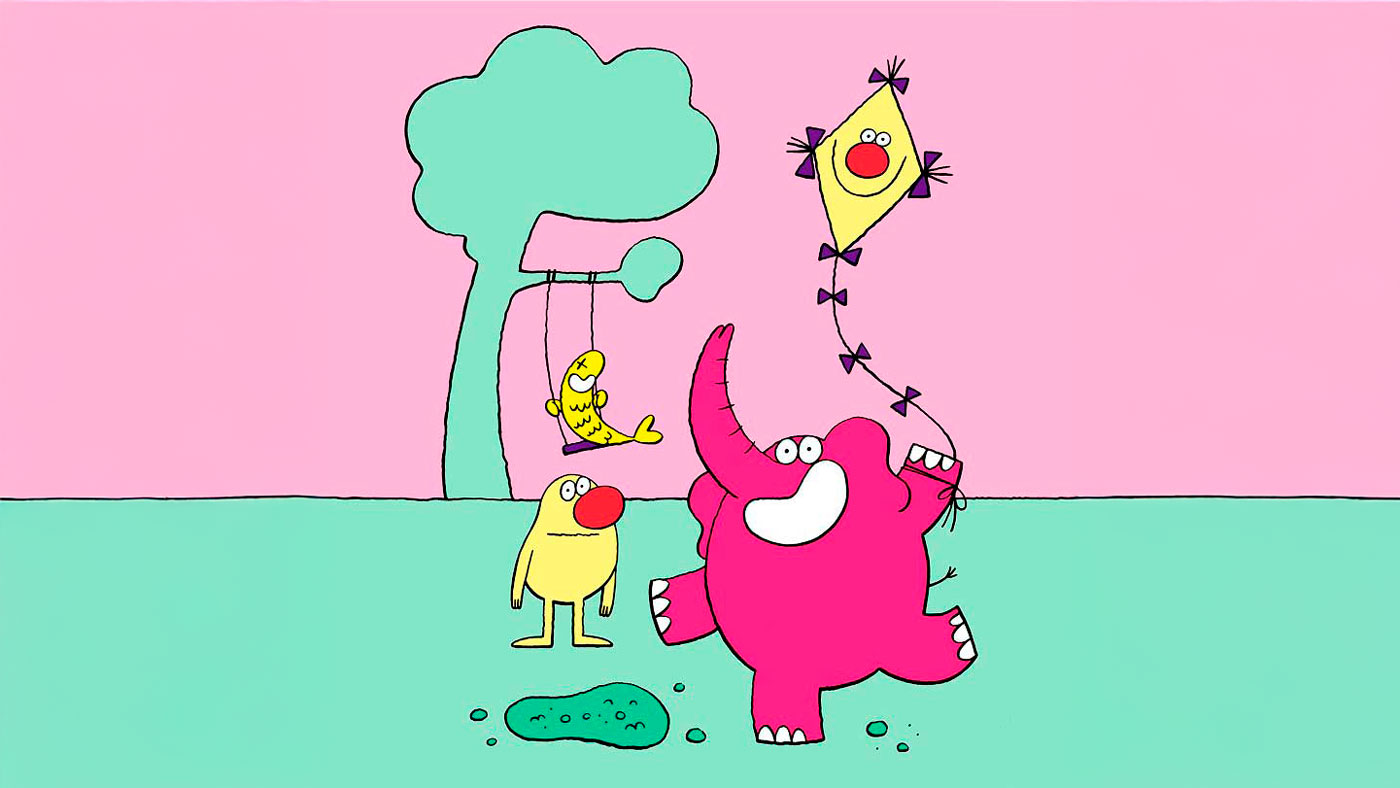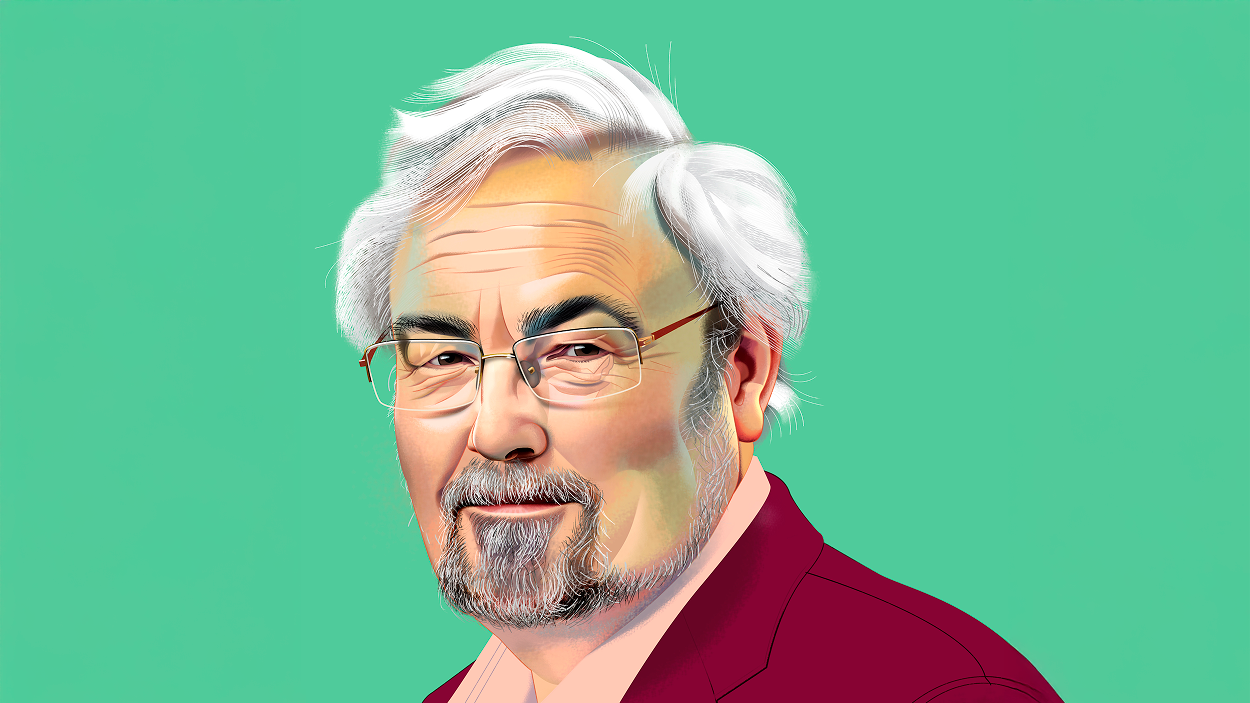In the game of business, culture deals the cards
Corporate culture, once overshadowed by technology and strategy, is reclaiming its place as the foundational core of an organization — fueling innovation, collaboration and resilience. But like any set of rules or tools, these shared values, behaviors and habits need regular updates and refinements to remain effective.
Your customers are changing. Your products are changing. The technologies you use to produce and deliver your offerings are changing. But your culture? If your company is like most, it’s probably more or less the same as it’s been for a long time. “Culture tends to change gradually, if at all, at the meta level,” says Charlie Sull, co-founder of the corporate culture consultancy CultureX, which has conducted some of the largest studies of corporate culture ever undertaken. In a way, this makes sense: Basic human nature doesn’t change. On the other hand, if every other aspect of your business is changing, how can its culture stay the same?
And there are good reasons to improve work environments that employees experience as not engaging – or even alienating. Corporate culture experts have found that teams that feel close to each other and communicate well experience lower turnover and inspire higher levels of engagement. Building and nurturing a corporate culture that accurately reflects an organization’s values and goals can provide strategic guidance and become a sustainable competitive advantage.
In many ways, culture as an agreement among a defined group of human beings is a fluid arrangement, but it can be considered an organization’s operating system, the foundational set of rules by which the game is played and things get done. Shared beliefs and behaviors, rituals and habits make a company – its leaders, employees and even outside partners – come together, work together and ideally stay together through the ups and downs of disruptions and economic cycles.
The change in worker productivity associated with an approximately 20% increase in reported worker happiness.
Culture has a measurable impact on the bottom line, as well, as plenty of studies have shown. A positive culture can even increase employee productivity by up to 24%, according to researchers from the University of Oxford, MIT and Erasmus University Rotterdam. Having a creative corporate culture increases the number and importance of patents a firm is likely to file, a University of Rome study found. On the flip side, banks with aggressive, competition-driven cultures tend to engage in riskier lending practices, which lead to higher loan losses, according to research by the University of St Andrews in the UK.
Leaders, then, are well advised to pay attention to what deck of cards makes their culture unique – and must be prepared to reshuffle their hand before performance and profits are impacted. When US-based executive search firm Korn Ferry surveyed 500 senior executives from leading companies, it found that almost two-thirds attributed 30% or more of their companies’ market value to culture – and one-third attributed even 50% or more.
Corporate culture didn’t begin to take hold in management circles until late in the 20th century as academics and companies tried to understand the interplay between values and performance. The mandatory first step on this journey of discovery is to properly define a company’s culture. You might think you have a good sense of it already, but don’t be too sure. Studies have found almost no connection – and in some cases, in fact, even a negative correlation – between what people at the top of the corporate ladder considered to be the company’s values and how people behaved.
This disconnect stems from the fact that leaders frequently misunderstand the nature of their company’s culture. Mats Alvesson, professor of business administration at Lund University in Sweden, has noted that many organizations develop hyper cultures – a performative culture where people say and do things in ways that follow the demands of the leadership rather than the company’s true nature – to the detriment of their health and productivity.
Even companies that do make an effort to analyze themselves run into difficulties because they are using a dated tool to measure their culture: the engagement survey developed in 1932. Only some have started to deploy new AI tools to analyze employees’ natural language at scale, hoping to capture the nuanced nature of corporate culture. Alvesson recommends analyzing specific practices and how people relate to them. One example is to consider recording a meeting and then bringing in a culture expert to analyze the interaction.
Your culture will be as unique to your company as you make it. Try out some ideas, see what fits and build your hand with both confidence and intention.
LOWER-TECH MEANS of self-analysis are also an option. One such shortcut suggested by Cary Cooper, a professor of organizational psychology and health at Manchester Business School, University of Manchester, is to ask people for five adjectives that describe their company. Often, he says, the exercise will show that there is not only little correlation between employees’ perceptions and what senior management believes to be the culture, but little overlap between what different teams within the company see as the culture. “You’re going to find totally different perceptions. One group has their perceptions, and the majority agree with that, while another group has a totally different perception because they’re defining it by the group of people they work with,” Cooper says.
In the end, discussion is still the best way to clarify the core elements of the culture. “One needs to aim for open and realistic discussions and reflect upon what one is doing. Asking questions such as ‘What do we really mean by these words?’ ‘Is this actually what guides us?’” suggests Alvesson, co-author of Changing Organizational Culture and The Stupidity Paradox.
Sometimes, looking to the past can offer important precedents and clues about how to go forward. For a deeper grounding, Bill Carr, a former long-time Amazon executive and co-author of Working Backwards: Insights, Stories, and Secrets from Inside Amazon, suggests interviewing executives about the principles they followed when they founded the company. “You need someone to go out and speak with the top leaders and role model leaders in the company and ask them a series of questions about what are the defining behaviors and principles that they observe? What has made this company great?” he says.
“One needs to aim for open and realistic discussions and reflect upon what one is doing.”
OTHER COMPANIES HAVE TAKEN a different approach and tried to create a much more detailed overview of their cultures. Netflix, for example, is well known for a PowerPoint deck delineating the company’s culture that in its first iteration in 2009 ran to 125 slides.
Last revised in 2024, the deck now reflects not just management’s latest thinking about the company’s culture, but 1,500-plus comments from the streaming service’s 13,000 employees. It supports four major propositions. First, that Netflix models itself “on a professional sports team, not a family.” It also emphasizes “People over Process,” that is, giving people freedom to make decisions; being “Uncomfortably Exciting” – the idea that in order to succeed in entertainment, the company needs to thrive on constant change; and striving to be “Great and Always Better.”
Software company HubSpot has another oft-quoted culture deck that states: “We obsess over our culture just like our product. Because culture is a product. We are building two products: One for our customers. One for our employees. Culture is the product we build for ourselves.”
Culture is an emergent property – it happens, whether it’s intentional or not. Therefore, the question of if and how it needs to change after taking stock is crucial. “At the individual level, it is possible for a company’s culture to improve dramatically in a short amount of time,” Sull explains. That is, “if they know what their culture is, know what steps to take to improve it and have executive buy-in to improve it.”
Often, a culture will outlive the reason it formed in the first place. Maybe your teams keep changing and the people working for you today are short-term contractors. Maybe the front office’s business aspirations to be a low-cost service provider are now running up against a culture that demanded high-touch, high-quality service. Or maybe you will need to learn to work in the future to satisfy the demands of customers who aren’t even people.
Roger Martin, professor emeritus of strategic management at the University of Toronto’s Rotman School of Business, says leaders should begin with a bit of introspection – figuring out where they want to go by taking the time to ask themselves what they dislike about the status quo. “What really annoys you about your current outcome as compared to outcomes you wish? What’s the biggest gap between what you wish were happening and what is happening?” he says. “If you want to make that gap go away, you have to contemplate making a different set of choices.”
The hand of cards that once defined your culture may not always keep you on track to advance. Shake things up from time to time and create a flexible framework that can respond to change.
ONE HABIT THAT CAN HELP leaders tweak or update their culture is to copy Amazon’s signature move: thinking from the customer back. In other words, asking what an organization would need today to attract and support its customers most. Carr says that staying “relentlessly focused” on the customer has been key to Amazon’s success and helped give the culture its distinctive shape, growing from just 11 employees in 1995 to more than 1.5 million in 2024.
Understanding your company and clarifying its goals over time, however, is only the beginning. Next comes the far more difficult step of driving change. “If you’re an executive at a company, you probably have decades of work experience, and you’ve developed a series of habits and methods that have allowed you to get to that point. Expecting someone to suddenly change those substantially without dramatic intervention is unrealistic,” Carr says
At the same time, Cooper suggests focusing on a particular objective, then giving individual units some leeway about how they want to get there. One way to do that is to pick an indicator that can demonstrate a cultural change is underway, such as publicizing gender pay gaps as a proxy for the degree to which the company provides women with equal opportunities. “That’s how change takes place. Change does not take place with people saying, ‘here are our five missions,’” explains Cooper.
At Amazon, that kind of focus has been provided by its leadership principles. Carr says his former boss, Amazon founder Jeff Bezos, realized early on “that it’s just not enough to articulate your principles. What he sought to do is figure out, how do I create scalable, repeatable processes or mechanisms designed to support, reinforce and cement those principles into daily life?”
“IF YOU’RE AN EXECUTIVE, YOU’VE DEVELOPED HABITS. EXPECTING SOMEONE TO SUDDENLY CHANGE THOSE WITHOUT DRAMATIC INTERVENTION IS UNREALISTIC.”
A MORE COMMON SCALING TECHNIQUE is for top leaders to model the behavior they want to encourage, Martin says. You want to “be the change you would like to see in the world,” he adds, quoting a line often attributed to Gandhi. One of Martin’s favorite examples of cultural role models is A.G. Lafley, the former CEO of Procter & Gamble. Lafley made store inspections and interviews with local customers a key part of every country visit. “Did he say to the head of P&G Turkey, ‘You have to do this, I am making a new rule’? No, he just did it,” he adds. But it sent a signal to managers about the value the company placed on its customers.
What’s also necessary is buy-in throughout all levels of management. Spencer Harrison, a professor of organizational behavior at INSEAD, argues that the middle manager is a frequently overlooked source of strength. “We give senior leaders too much credit for building culture and leave very few actions for leaders at other levels of the organization,” Harrison says. “One of the keys is for middle managers to realize that, yes, senior leaders do play an important role in setting up the big-C culture – what the entire organization is doing. Middle managers then play an important role in the small-c culture – the culture that exists in their sphere of influence in their day-to-day work,” he explains.
When it comes to reinventing an organization’s culture, the message also matters, says Zach Mercurio, a researcher at Colorado State University’s Center for Meaning and Purpose and the author of The Power of Mattering. He argues that the language used in management education has held back the formation of stronger cultures. Classifying managing people as a “soft” skill, for instance, has encouraged people to think it’s of low value and not worth investing much time in learning. Mercurio worries that the fact we communicate in shorter and shorter bursts – think of the flurry of text messages and emojis that fill our days – means people spend less time learning to actually communicate with each other. “We scale product development processes, we scale service chains, supply chain management, but we don’t scale human skills very well,” he says.
Yet good communication skills are critical. Not only do they help people convey information effectively, but they also create personal connections that are a key aspect in building a good working culture. For Mercurio, building a successful culture in organizations and groups of all shapes and sizes comes down to treating people with respect. “It can be problematic if you have all these big rituals – that we should be together, that we’re a purpose-driven organization, that we care about people. But then if I go in every day and I experience the opposite around me, it can create more dissonance and result in more turnover.”
A new structure is only as good as its foundation. For global firms in particular, balance, skill and effort are all required to keep a solid framework from falling flat.
FOR A GLOBAL ORGANIZATION, in particular, some extra effort may be required to keep everyone working together across geographies and respective cultural norms. “The Chinese manager learns never to criticize a colleague openly or in front of others, while the Dutch manager learns always to be honest and to give the message straight. Americans are trained to wrap positive messages around negative ones, while the French are trained to criticize passionately and provide positive feedback sparingly,” writes Erin Meyer in her acclaimed book The Culture Map: Breaking Through the Invisible Boundaries of Global Business.
To cope with the numerous types of misunderstandings such cultural gaps can create, Meyer, a professor at INSEAD, has developed a tool she calls a ‘culture map,’ a framework that differentiates between national cultures that operate along a number of different axes, such as cultures where people practice explicit and direct communication versus cultures where people prefer to operate more indirectly. Making those unseen barriers visible can go a long way to right a listing culture.
Another way organizations have successfully changed their culture is by inspiring employees to look at their work in the context of a larger goal. For example, a 1989 advertising campaign by Tata Steel in India, highlighting the company’s humanitarian works with the tagline “We also make steel,” sought to refocus the company’s identity on the goal of Indian development. “It brought a sense of pride to the nation as a whole and the organization in particular,” writes Santosh Desai, a commentator on Indian consumer culture. One anecdote that comes up in management talks about the value of taking a longer view involves John F. Kennedy asking a custodian what he did at the Cape Canaveral space center, in response to which the custodian said: “I’m helping put a man on the moon.” It’s a nice story in itself, but there’s more to it. The janitor’s outlook wasn’t just his own, individual positivity. The space agency had cultivated the idea among all 400,000 people working on the Apollo project in the 1960s. “NASA had what was called ‘ladders to the moon’ etched on these blackboards in their facilities,” Mercurio explains. “At the bottom, they had the monthly task group that the team, whatever team it was, was working on. The next rung up had a tangible, measurable objective that task was necessary for, and this ultimately led to how it would put a person on the moon by the end of the decade.” He thinks it’s an approach worth emulating. “You’re not just telling people that they matter or telling people that they should buy into this big purpose. You’re showing them indisputable evidence that the thing they’re working on today has a measurable impact.”
Eine oft erzählte Anekdote handelt von John F. Kennedy, der einen Hausmeister im Raumfahrtzentrum Cape Canaveral fragt, was er dort tue. „Ich helfe dabei, einen Mann auf den Mond zu bringen“, antwortet er. Die kleine Geschichte ist charmant, geht aber tiefer: Sie offenbart, dass die langfristige Perspektive des Hausmeisters weit über den eigenen Tellerrand hinausging.
A solid yet flexible framework is one of the best hands a company can have. Play it with creativity and you can build a narrative that represents your culture and your purpose as far more than just a game.
COMPANIES CAN USE THE STORIES they tell, and retell, to strengthen their culture. Angus Fletcher, a professor of story science at Ohio State University, says that in an organizational context, stories help people define both who we are and who we might become, by giving us a way to imagine how our capabilities and character will respond in a new time and a new situation.
Take Marc Benioff, the founder and CEO of San Francisco-based tech company Salesforce, who talks about its corporate culture using the native Hawaiian term for family, ‘Ohana. According to the company, it “represents the idea that families – blood-related, adopted, or intentional – are bound together, and that family members are responsible for one another.” The term is prominently used in corporate materials, hiring drives and even for dedicated floors for events in the company’s office buildings.
But the coming decade may prove challenging for corporate storytellers – indeed, for anyone trying to shape culture – as AI becomes increasingly integrated into the workforce. Despite its advances, AI still suffers from a structural inability to create stories that aren’t just rehashes of older stories, Fletcher argues, calling it “a glitch” that will limit its creative value. Other scholars have pointed out that AI can’t empathize the way people can, an ability that constitutes a key part of innovation.
If the bots can’t tell a good story and they can’t feel, how will they fit into the culture? Better than you might think. For one thing, human beings tend to play nicely with them. Hardwired for empathy, we tend to share, even with virtual creatures.
“YOU’RE NOT JUST TELLING PEOPLE THAT THEY SHOULD BUY INTO THIS BIG PURPOSE. YOU’RE SHOWING THEM THAT THE THING THEY’RE WORKING ON HAS AN IMPACT.”
THE BOTS ARE PROVING to be surprisingly good teammates, too. A recent Harvard Business School study observed the use of AI by 776 veteran commercial experts and technical R&D experts at Procter & Gamble in a one-day seminar. The survey compared the creativity of four groups: people working alone, people working in a team, people working in a team with a GenAI member and people working alone with a GenAI member. Teams with a GenAI member outperformed all other categories, and almost all of the teams that created truly exceptional solutions tended to be teams working with a GenAI member.
Ethan Mollick at the University of Pennsylvania’s Wharton School who studies living and working with AI thinks that the findings suggest companies should reconsider “team structures, training programs and even traditional boundaries between specialties.” Or, in other words, embark once more on redefining their culture. If respectful and transparent collaboration within a defined group, whether purely human or augmented by GenAI co-workers, is the name of the game, then the cards of each company’s culture deck have to be reshuffled and dealt again to create a lasting competitive advantage.
Auch als Teamkollegen erweisen sich KI-Systeme inzwischen als überraschend leistungsfähig. Eine aktuelle Studie der Harvard Business School untersuchte den Einsatz von KI bei 776 erfahrenen Vertriebs- und F&E-Fachkräften von Procter & Gamble während eines eintägigen Seminars. Dabei wurde die Kreativität von vier Gruppen miteinander verglichen: Personen, die allein arbeiteten, Teams ohne KI, Teams mit einem generativen KI-System (GenAI) als Mitglied sowie Einzelpersonen, die mit Unterstützung eines GenAI-Systems arbeiteten. Am besten schnitten die Teams mit einem GenAI- Kollegen ab, und fast alle herausragenden Lösungen entstanden in Gruppen mit einem GenAI-Mitglied.
Ethan Mollick von der Wharton School der University of Pennsylvania, der das Zusammenarbeiten mit KI erforscht, sieht in den Ergebnissen einen klaren Hinweis: Unternehmen sollten ihre Teamstrukturen, Trainingsformate und die Grenzen zwischen Fachbereichen überdenken. Mit anderen Worten: Sie sollten sich erneut daranmachen, ihre Kultur zu definieren. Wenn respektvolle und transparente Zusammenarbeit, ob im rein menschlichen Team oder gemeinsam mit GenAI-Kollegen, entscheidend dafür ist, müssen die Kulturkarten neu gemischt werden, um nachhaltige Wettbewerbsvorteile zu sichern.
Stay ahead of the curve!
Sign up for our newsletter and let Think:Act bring you up to speed with what's happening today and guide you on what's happening next.



























